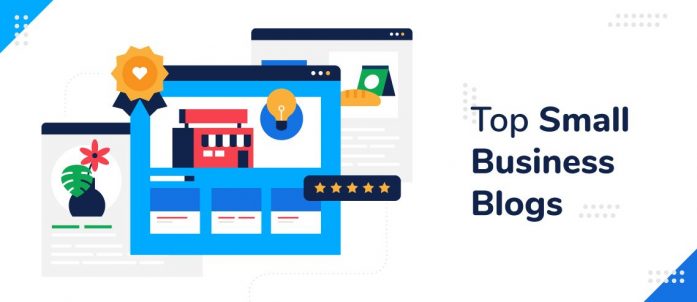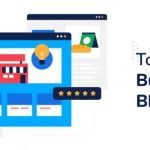
I’m willing to wager that if you’re reading this article, you fall into one of two camps:
- Either you’ve been blogging for a while and just aren’t seeing the needle move.
- Or you’re just getting started with inbound marketing and want to make sure your first steps are in the right direction.
Whatever the case, it can feel like pulling teeth when trying to figure out what topics to address — and you don’t want to write about just anything. There are topics that will be more helpful to your audience and grow your bottom line more than others.
Over the last four years, I’ve helped dozens of companies launch their inbound marketing strategies and one of the most important aspects of successful inbound marketing is choosing topics that not only connect with your audience but, ultimately, turn them into paying customers.
The mistake I’ve seen far too many businesses make is publishing blog content that simply isn’t relevant to their audience’s buyer’s journey, which doesn’t help customers make well-informed buying decisions. And because of that, it is either never read or leaves little to no impact on the reader.
For this reason, I’m going to give you a comprehensive list of business blog topics that takes the guesswork out of where you need to start, including:
- Where my blog list came from.
- What each blog topic is and how to write them.
- Examples you can reference for inspiration.
Ready to learn which business blog topics drive more organic traffic and revenue?
Here’s what to write about.
Contents
- 1 Where My Blog Topic List Comes From
- 2 1. Cost articles
- 3 2. “Best of” articles
- 4 3. Comparison articles
- 5 4. Pros and cons articles
- 6 5. Benefits articles
- 7 6. Problems (with solutions) articles
- 8 7. Problems (that need solutions) articles
- 9 8. How-to/tutorial articles
- 10 9. Correlation/causation articles
- 11 10. Description and definition articles
- 12 13. Law/regulation/requirement articles
- 13 14. Myth/misconception articles
- 14 Final thoughts
Where My Blog Topic List Comes From
I got my start working as a content manager for The Alaska Sleep Clinic (ASC). They diagnose and treat sleep apnea and other sleep disorders.
They provide a service: sleep studies.
And they sell products: CPAP masks and machines.
To their misfortune, however, most of the blog articles on their site didn’t relate to the services they provided or the equipment they sold.
Instead, they opted for light-hearted, entertaining, and fun articles like:
- “What do Dreams Mean?”
- “Celebrities with Sleep Disorders”
- “5 Bedtime Beauty Tips”
While those might be amusing to read on a site like Buzzfeed, they don’t often help people make buying decisions.
I mean, do any of them sound like they relate to selling diagnostic tests or equipment?
Even if there are some valuable nuggets of information in there, the titles don’t make that known. They’re entertaining, but not really educational.
When I joined Alaska Sleep, I would have made the same mistakes too, because those were the kinds of articles I would also read and think were interesting.
Fortunately for me, I had an amazing mentor in Marcus Sheridan (whom I would work for years later at The Sales Lion, then IMPACT).
Alaska Sleep hired Marcus to teach me the inbound marketing strategies outlined in his book, They Ask, You Answer.
The basis of this strategy is a simple one: Answer the questions your audience is asking.
By applying the strategy of answering the most common questions the staff at ASC were asked on a regular basis from patients, I was able to grow the website traffic from 2,500 visits each month to over 400,000.
I’ve since worked with dozens of businesses helping them answer the questions their prospects are asking.
Through reviewing the top-performing content on each site (by view counts, engagement, lead generation, and sales), I’ve found the common topics that bring companies the most results.
I’m going to share them with you below. And note, every link to examples listed in this article is from companies I’ve worked with both at The Sales Lion and, now, here at IMPACT.
1. Cost articles
This one comes straight from what Marcus calls The Big 5 (as do four others on this list).
Have you ever searched online for how much you might pay for, say…anything?
If you’re like everybody with internet access, you have — but how often do you get frustrated from not finding answers?
Quite often, right?
Cost questions are so important to buyers, but so few companies care to answer these questions. In fact, they’re afraid to.
Be the company that answers these questions. Cost articles are easy wins for traffic as well as conversions because they build trust.
Note: Cost is so important to not only write about — but also to get right — that I wrote an extensive article on the topic, How To Write a Cost Article.
Examples of cost articles
- How Much Does a Copier Cost?
- Cost of a Spray Polyurethane Foam Roofing System
- Does Insurance Cover Sleep Studies?
2. “Best of” articles
Here’s a quick exercise:
Let’s say you’re thinking about picking up mountain biking.
You moved to a new place with lots of amazing bike trails. You’re ready to explore your new surroundings and have fun while doing it. The only problem is…you don’t have a bike, and you don’t know anything about mountain biking.
If I asked you to turn to Google to find the perfect mountain bike, what is the very first search you type?
“Mediocre mountain bikes,” right?
Wrong. Nobody has probably ever searched that.
Instead, you probably searched something along the lines of “Best mountain bikes.”
Or, if you wanted to get more specific, you might have searched “Best mountain bikes for women,” “Best mountain bikes for beginners,” or, “Best mountain bikes for muddy trails” (depending on where you live and ride).
“Best of” lists are successful for two significant reasons:
- They are digestible and easy to skim.
- We love ranking things and seeing how they stack up against others.
Common keywords to use: Any superlative adjective (best, top, fastest, easiest, strongest, longest-lasting, most popular, etc.)
Examples of “best of” articles
Best Pool Builders in Richmond, VA
- 7 Best Selling La-Z-Boy Recliners
- 22 Best Content Marketing Tools and Apps
3. Comparison articles
To put things into neat little ranking orders, we often want to take some of the leading entries and have them duke it out in a head-to-head match-up.
You can either structure your comparison article by seeing how the competitors fare against each other in different categories, or you can give each its own in-depth discussion detailing the pros and cons of it with a nice little wrap-up at the end.
Examples of comparison articles
- Insulated Vinyl Siding vs. Fiber Cement
- Project Manager vs. Construction Manager
- Single Girder vs. Double Girder Overhead Cranes
4. Pros and cons articles
Buyer’s remorse sucks. Nobody wants to make a purchase only to regret it a short time later. When this happens, you’re often left wishing you had researched your decision just a little bit more.
With this in mind, one of those possible searches you’re likely to make is for a list of both the pros and the cons of the thing you want to buy.
We know we love to organize and rank things. In this case, we’re just organizing two columns and determining whether the benefits of the purchase outweigh the drawbacks.
Examples of pros and cons articles
- Ultimate List of HubSpot Pros and Cons
- Pros and Cons of Automatic Pool Covers
- Pros and Cons of Cloth Diapering
5. Benefits articles
Sometimes we just want to block out the bad stuff and only look at the good stuff.
With benefits articles, you can write persuasive pieces that only highlight the advantages of a product or service.
While these are important, be aware that they are among the most common articles businesses are already writing about.
Readers are often a little more on-guard when reading these types of articles because they know we want to tell them how amazing our products and services are, and their BS flags will be quick to call us out for overinflating our value.
Be careful how far you push your chest out lest they roll their eyes at you and walk away.
Examples of benefits articles
- Benefits of Inbound Marketing
- 7 Benefits of Hiring a Tenant Representation Broker
- 5 Benefits of Purchasing a Stressless Recliner
6. Problems (with solutions) articles
If you really want to build trust with your audience, be willing to talk about the problems with your product or service.
You know, and I know, what you’re selling isn’t the perfect fit for everybody.
It might be a tough pill to swallow, but you should be the first to admit when this is so.
It may be hard to turn down potential leads, but if it was never going to work out in the first place, these kinds of articles can weed out bad fits.
On the other hand, some of the problems your readers heard about might actually have easy solutions. In your article, you can address the problems fairly and offer the right solutions, stopping their objection in its tracks.
Examples of problems (with solutions) articles
- 5 Common Problems When Working With a Video Production Agency
- Top 5 Most Common Basement Waterproofing Problems
7. Problems (that need solutions) articles
The buyer’s journey begins with a problem or pain your customer is experiencing.
They might not know the names of any of the possible solutions, but they’re very aware of their symptoms. So, they turn to search engines to help identify what their problem is (put a name to it) and see what the various solutions might be.
For example, at Alaska Sleep, the most frequently asked questions by our patients were about the problems they experienced:
- Why am I so tired all the time?
- Is snoring harmful?
- Is lack of sleep bad for my health?
- Reasons I can’t sleep at night.
- Symptoms of insomnia.
Ask yourself, “What is the root problem my products and services solve? How would my customers phrase their query?”
These articles are often top performers in bringing traffic to a site, but are also very top of the funnel and require lots of lead nurturing to close as sales.
Examples of problems (that need solutions) articles
- Why Am I So Tired All the Time?
- Is Snoring Harmful to Your Health?
- Why Is My Commercial Roof Leaking?
8. How-to/tutorial articles
Does your business have a YouTube account? If so, start shooting how-to videos. If not, make a page and start shooting how-to videos.
If you sell software-as-a-service, you should have tons of tutorial videos on how to use your product, but let’s look at another example.
Let’s say you sell and install home appliances. You should have articles on all your appliances with titles like:
- How To Choose a Dishwasher.
- How To Use a Dishwasher.
- How To Clean a Dishwasher.
- How To Troubleshoot a Dishwasher.
- How To Replace a Dishwasher’s Water Pump.
- How To Tell if You Need a Dishwasher Repairman.
- How To Choose a Dishwasher Repairman.
- How To Become a Dishwasher Repairman.
Examples of how-to/tutorial articles
- How To Use Video for Sales (5 Easy Tips)
- How To Reduce Company Car Tax
How To Clean a Commercial Restroom
9. Correlation/causation articles
Getting back to problem articles, many people might ask correlation/causation types of questions around the same time.
Perhaps they’ve got a problem, and they want to know if it’s being caused by X.
Or, maybe they’ve heard of a solution but want to make sure that solution doesn’t lead to Y.
These are especially important questions to answer for medical clinics, but many industries can find value in answering these types of questions.
Examples of correlation/causation articles
- Are Recliners Bad For Your Back?
- Sleep Apnea and Weight: What’s the Link?
10. Description and definition articles
Sometimes people just want a clear explanation of what that thing you sell is or what exactly that service you offer entails.
These articles can sometimes have high competition volume because they’re so easy to answer. You might even find sites like Wikipedia, Dictionary.com, and the most authoritative entities in your industry ranking on the first page — but that doesn’t mean you shouldn’t also answer these questions.
You might just have to write a more thorough piece of content than the others.
These article types can often serve as cornerstone pieces of content on a topic you regularly discuss. When you answer more granular questions on a topic, you can always link back to this article as the main hub.
Examples of description and definition articles
- What Is a Cooling Tower Water Treatment System?
- What Is a Metal Roof?
- What Is a Phase II Environmental Site Assessment?
11. Type/classification articles
Type and classification articles are the offspring of comparison and definition articles.
They further categorize products and services into neat rows and columns to undergo review, and you can write them on just about anything.
For instance, in the last three years, I’ve really gotten into playing disc golf. One of the things I enjoy most about it is it’s an easy sport to learn, but a hard sport to master.
There are so many subtle nuances to playing, I often find myself geeking out on articles addressing topics like:
- Types of Disc Golf Discs.
- Types of Plastics for Discs.
- Types of Throws.
- Types of Courses.
- Classifications of Tournaments.
Examples of type/classification articles
- Types of Content Marketing Explained
- 3 Types of Cornhole Bags
- Types of Overhead Cranes
12. Qualification articles
How can you tell that the person or business you’re thinking of buying from is the most qualified (or at least minimally) to do the job?
Is the general contractor you hired to remodel your home legally able to perform the job or gone through additional certifications to prove their value? Are they licensed, bonded, and insured? What does any of that mean to you?
These articles are your opportunity to educate your audience on what they should be looking for in a high-quality product/service — and maybe even position yourself as such in the process.
Also, if you’re hiring and training employees to fill specialist roles, you could write articles to better recruit or educate your own candidates.
Examples of qualification articles
- Qualifications of a Phase 1 ESA Provider
- What Credentials are Required to Become a Sleep Technologist?
13. Law/regulation/requirement articles
You’d probably agree that it’s best practice to keep yourself and your customers out of any kind of trouble, right?
Are there any laws pertaining to your products and services they should know about? Anything that could come back to haunt them?
Educate them on those with these types of articles. They’ll be thankful you did.
Examples of law/regulation/requirement articles
- Understanding GDPR Requirements for Marketing Communications
- Swimming Pool Zoning and Permit Laws
- Does OSHA Require a Hook With a Safety Latch for an Overhead Crane?
14. Myth/misconception articles
Do some of your prospects have your products and services all wrong? Have they heard or been fed misinformation? Rumors can hurt any brand’s reputation.
Whether you have persistent misconceptions about the product you sell, or your competitors are intentionally misleading prospects about your services, you can use your blog to clear the air once and for all.
Examples of myth/misconception articles
- 5 Video Content Marketing Myths That Need to Go Away
- 6 Melamine Dinnerware Myths
5 Positive Parenting Myths Explained and Debunked
15. Review articles
Getting back to comparison and “best of” articles, people search for reviews on products and providers of services as part of their vetting process.
If you sell products, consider reviewing every single product manufacturer, product line, and the individual product you sell.
Just remember to be as objective as possible, or let people know why you’re being subjective.
You may also want to include links to other reviews around the web in the process.
Video reviews are also very influential pieces of content. Just search any electronic on YouTube with “review” and you’re bound to find one.
Examples of review articles
- A Massive Review of Semrush
- Review of Stressless Leg Comfort
- How Reliable Is Subaru?
16. Idea/trend articles
Is your audience often looking for inspiration? A little guidance on how they can create something of their own (hopefully while using your product)?
These can be great articles if your product or service is very visual.
Maybe you sell furniture and also have interior designers on staff. In these articles, you can give show off different design ideas that would appeal to them.
If you sell cooking appliances, gadgets, trinkets, or gimmicks, you could showcase food trends or new dishes to try.
Then, as you’re giving your readers the creative nudge, link back to the pages where they can purchase the products and services that can bring their ideas to fruition.
Examples of idea/trend articles
- 27 Social Media Campaign Ideas From Big Brands
- Current Trends in Home Decor
- 9 Commercial Real Estate Trends to Watch
17. Timeline question articles
How often do you answer questions that deal with the fourth dimension? Other than, like, right now?
All the time, right?
Let’s pretend you own a landscaping company. You probably get timeline questions daily. Customers want to know things like:
- How long will the job take?
- How long till my flowers bloom?
- When is the best time to hire a landscaper?
- How often should I have my trees trimmed and lawn mowed?
- Is it too late to put in a garden?
This is another opportunity for you to educate your audience on what it’ll be like working with you and set realistic expectations.
Examples of timeline question articles
- When’s the Best Time to Buy Living Room Furniture?
- When Should I Treat The Winter Damage to My Plants?
- How Long Does it Take to Install Foam Insulation?
Final thoughts
So there you have it, a list of blog article topics you can start writing today for your business that actually bring in traffic, convert leads, and close sales.
Why?
Because they’re the questions people want answered before they make a purchase.
If you’re the one providing those answers, what do you think their impression of you is going to be?
That you’re honest, trustworthy, and you care about educating your customers.
This is the kind of business they want to buy from and is a staple of the They Ask, You Answer approach to inbound.
To take the first step at implementing They Ask, You Answer in your business, talk to one of our advisors who can walk you through how to see these incredible results at your own company.
If you’d like to read more before you reach out, here are some additional resources:
- What Is They Ask, You Answer?
- IMPACT+ courses for any level
With strategic coaching and hands-on training for your marketing and sales teams, we can help your company improve your marketing metrics and scale your business with content.
[“source=impactplus”]














































